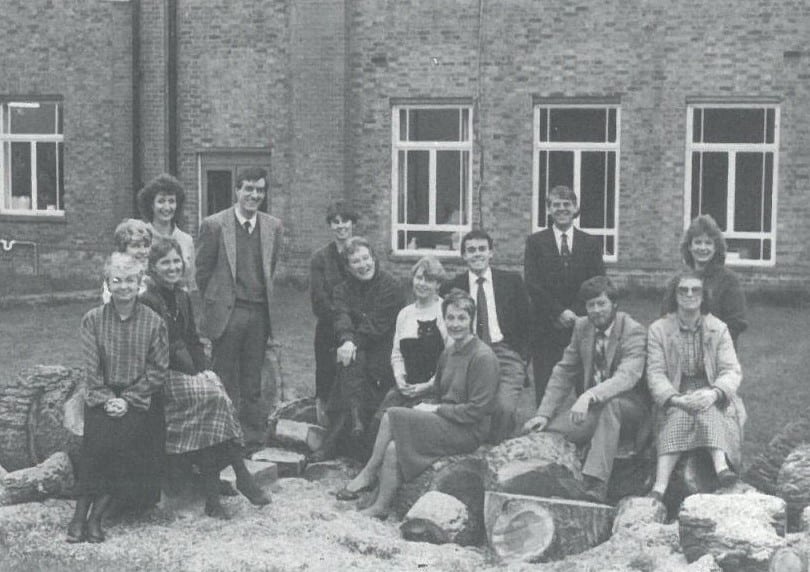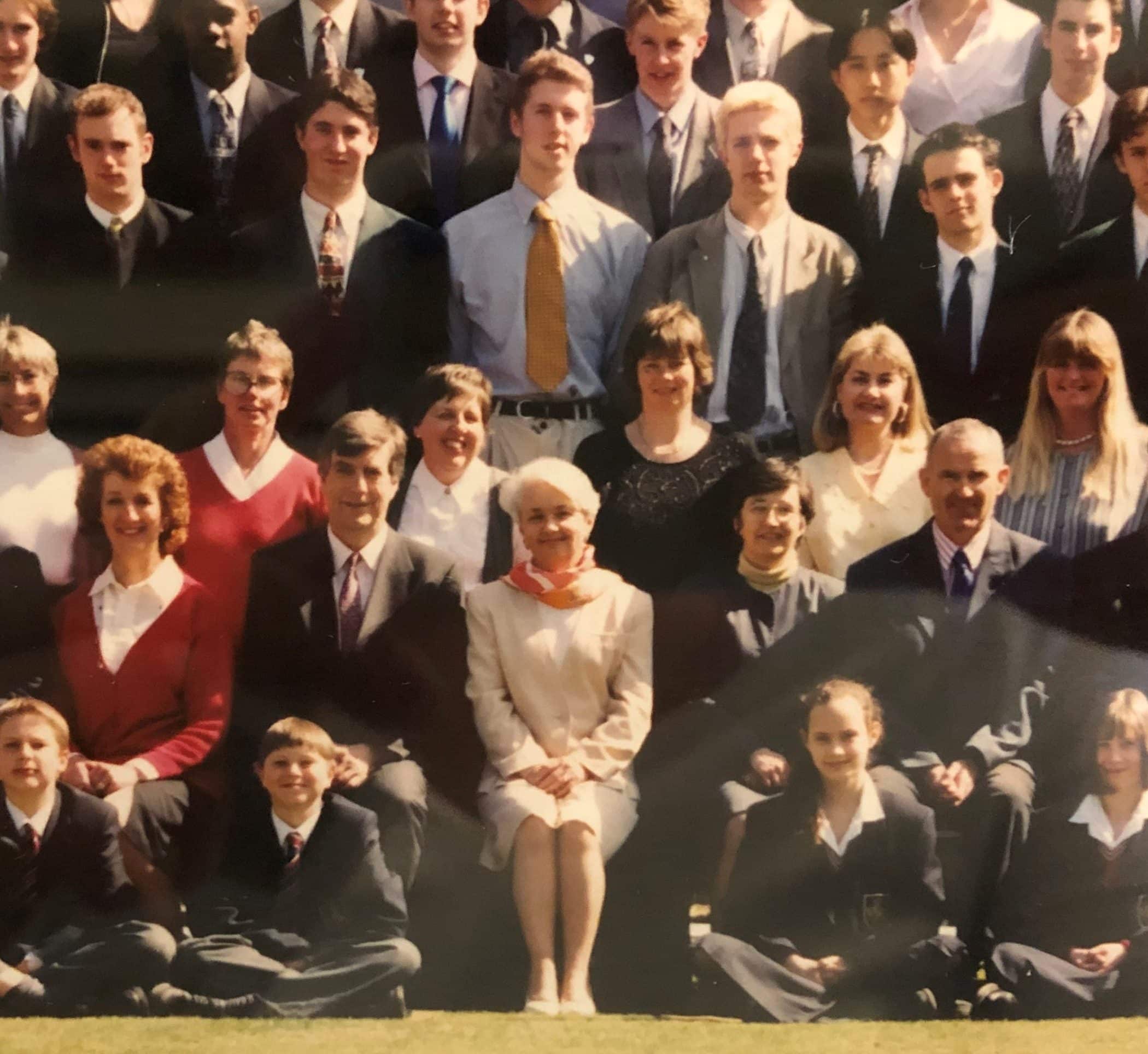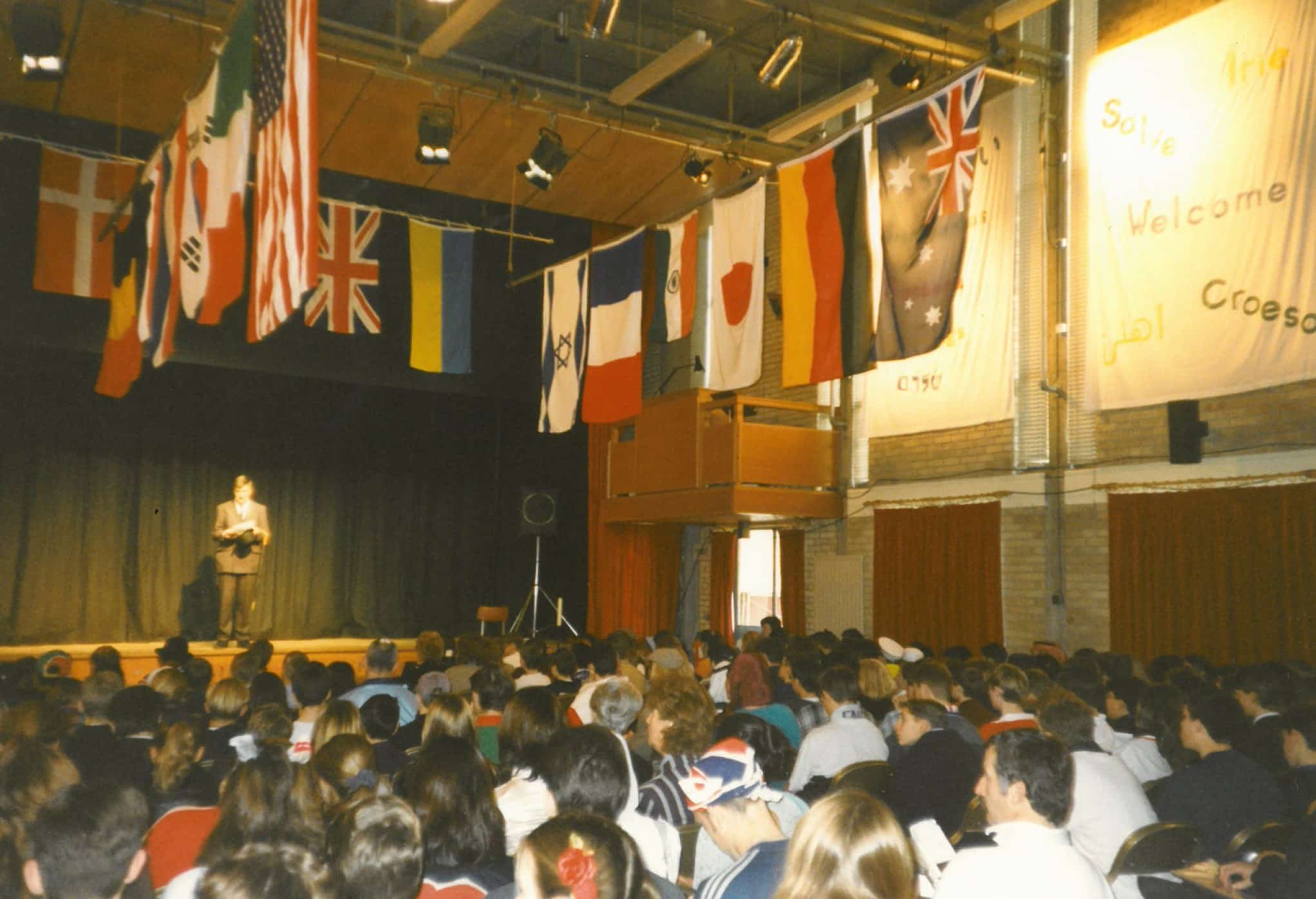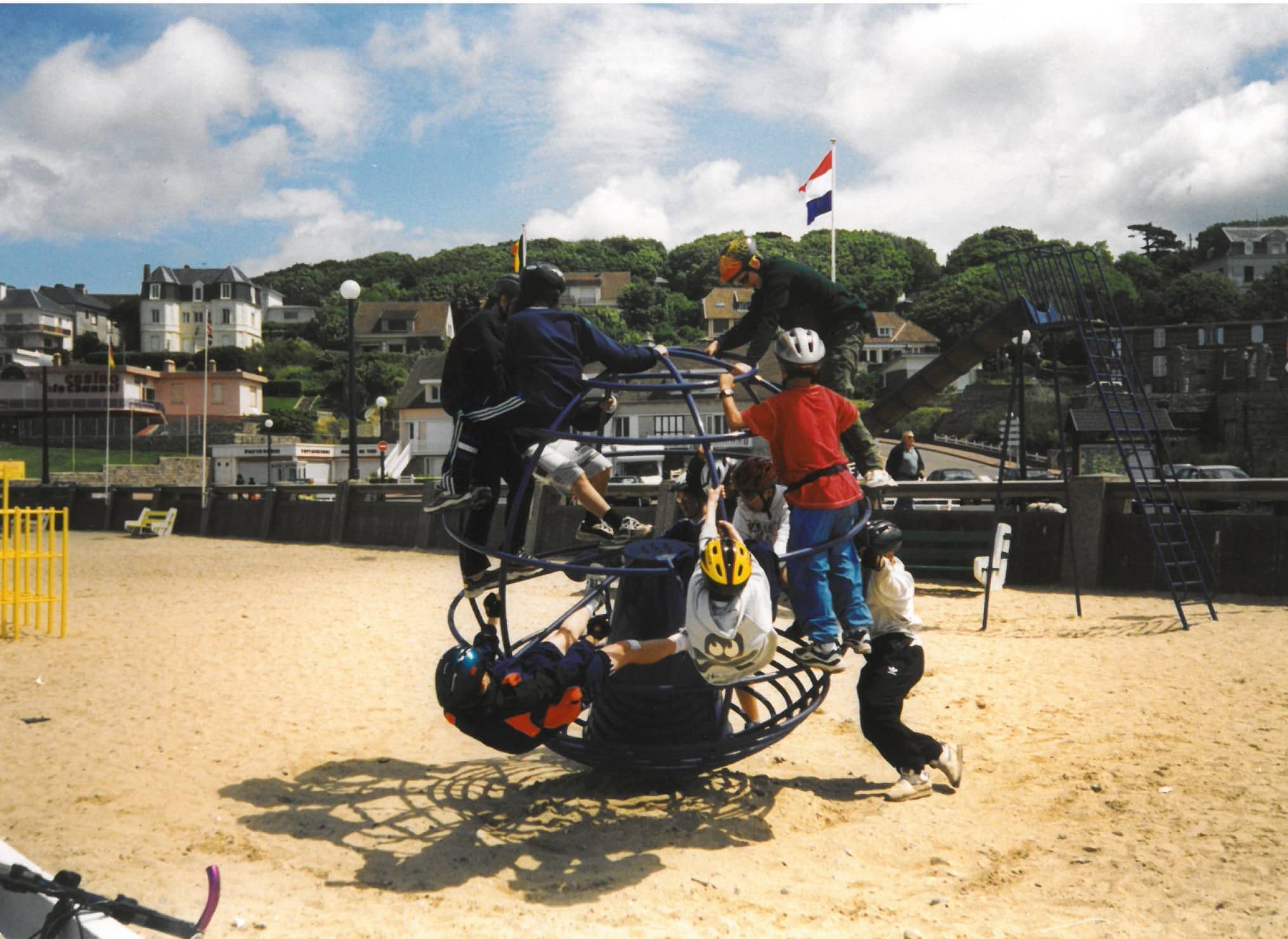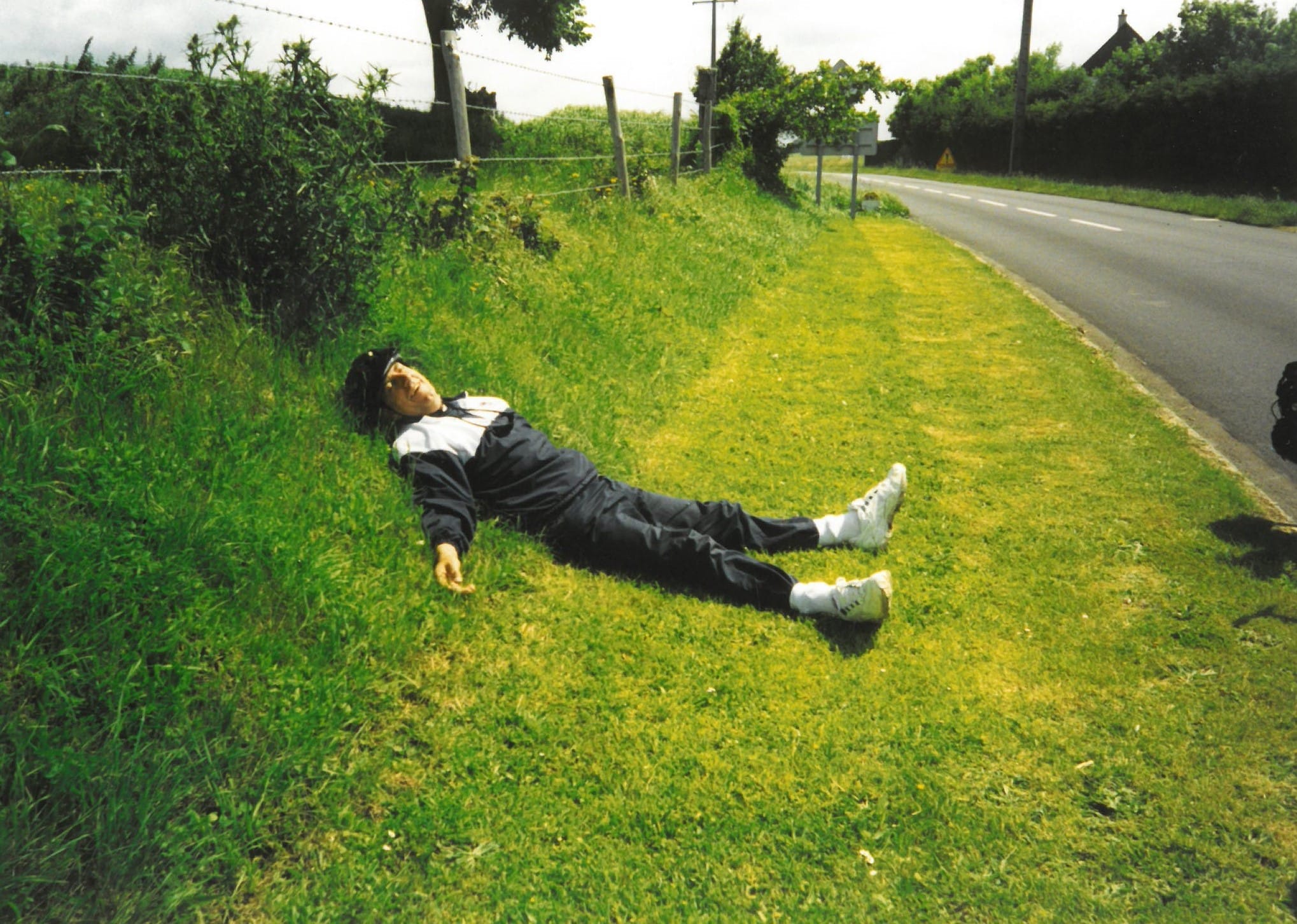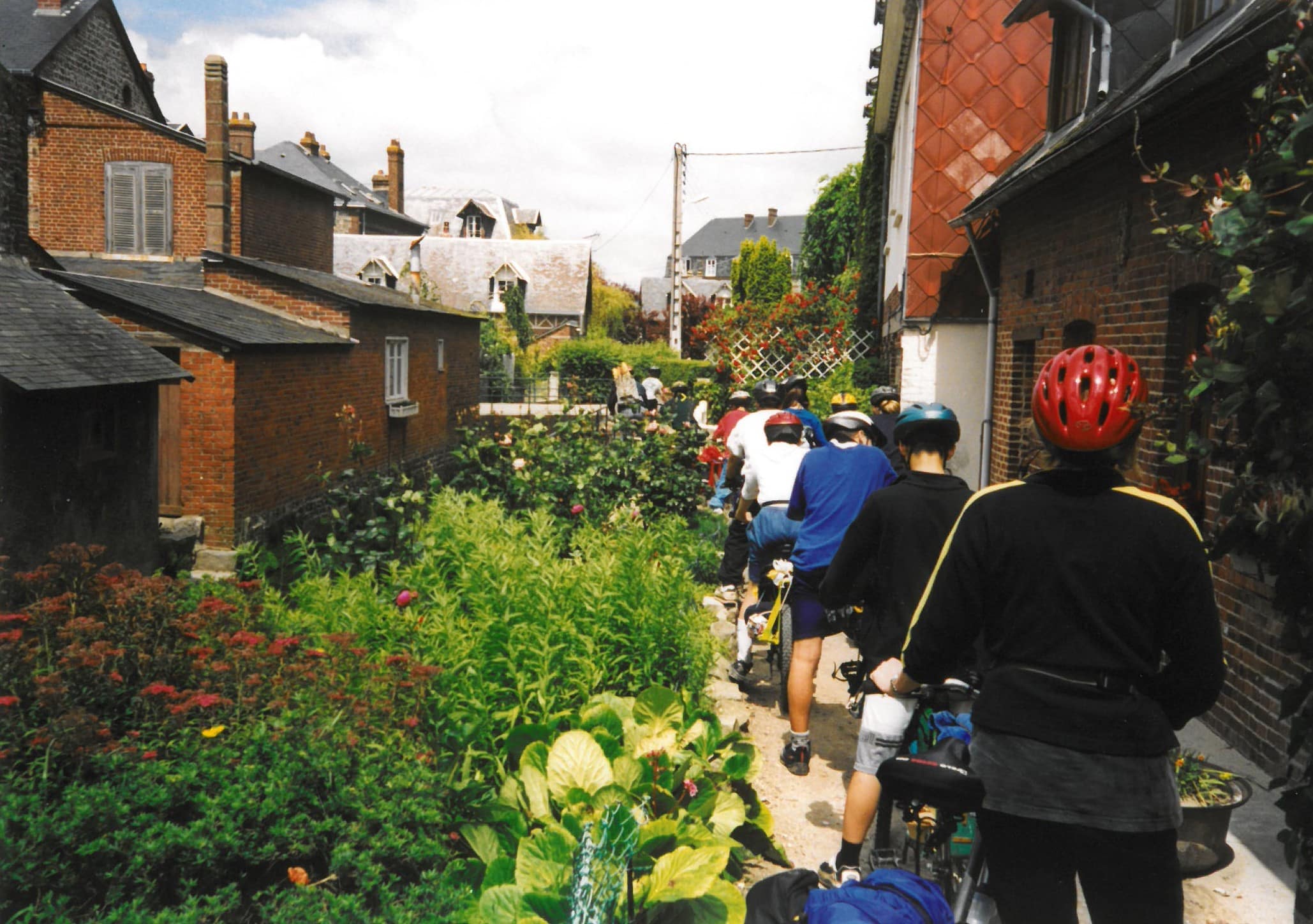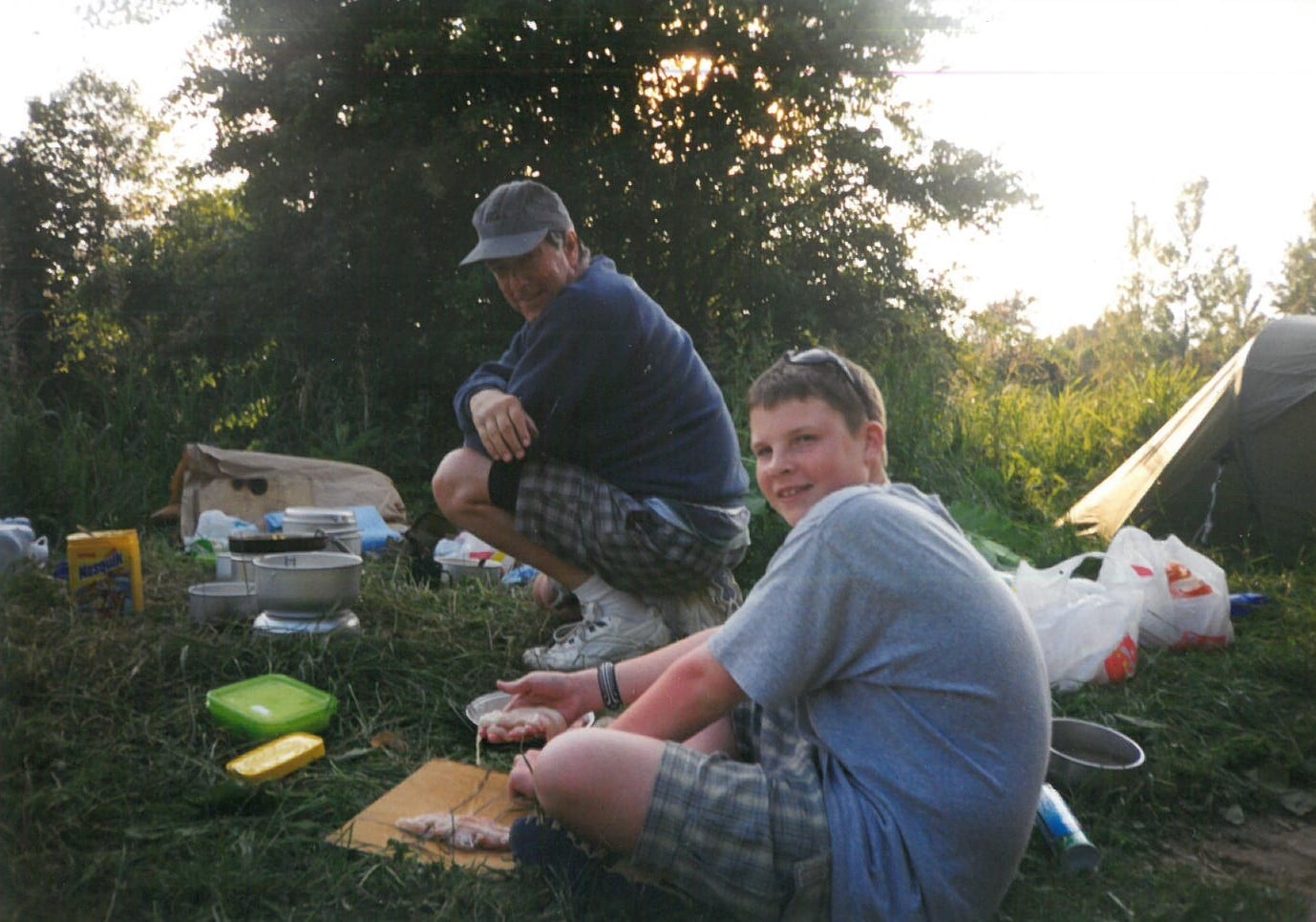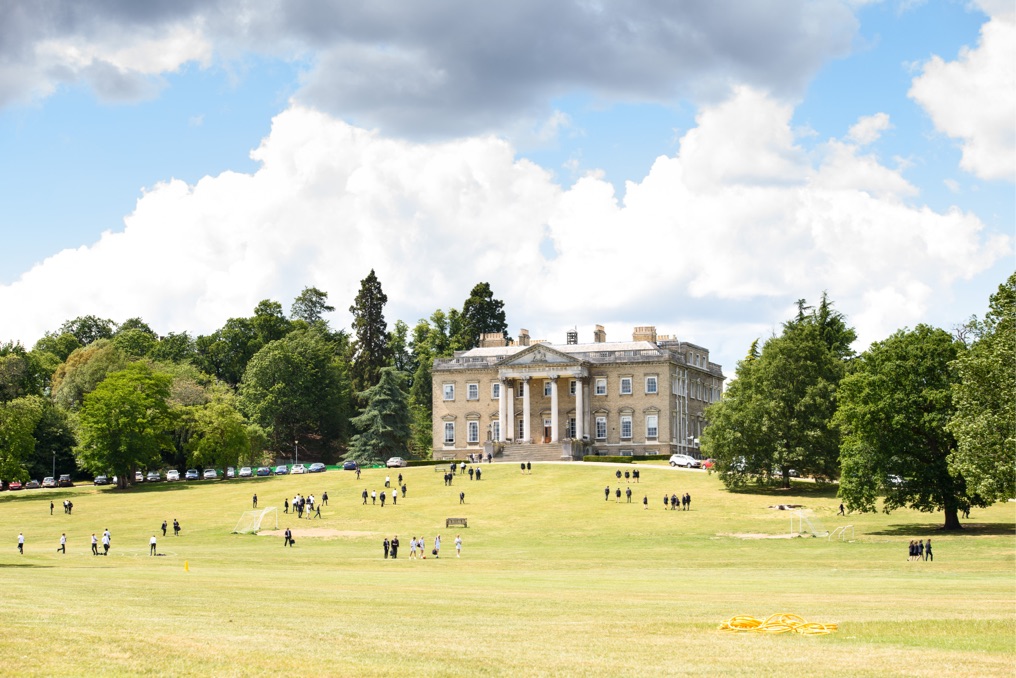FAN COURT SCHOOL & CLAREMONT FAN COURT SCHOOL
Former staff, 1976 – 2005 Governor 2012 – present
Gordon Hunt
Gordon has had a long association with the school. He remembers joining as a house parent at Fan Court School in 1976, the merger with Claremont School in 1978, the 1998 Cycle France trip and his role as head of the Senior School from 1994:
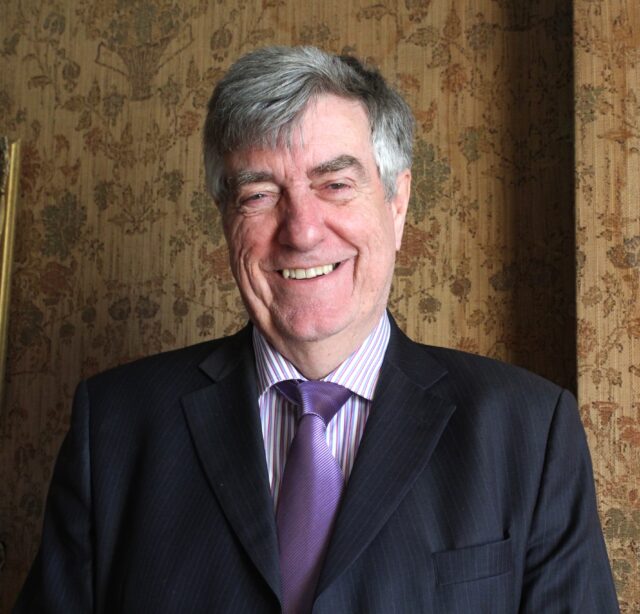
“What is your earliest recollection of Fan Court School?
In the Spring of 1976 my wife and I attended a talk in Plymouth on Fan Court School given by Brian Andreae the Head. At the end of his talk Brian said that he was retiring at the end of the summer term and they were looking for House Parents for about 30 boy boarders at the school aged between 7 and 13. My wife and I decided to travel up to the school for a tour and discussed the role with David Barker and his wife Jantina who were the current house parents. On return we decided to apply. Fan Court was situated in Lyne set in its own grounds with acres of playing fields and a shrubbery behind. Quite an idyllic setting for a Prep School.
We were accepted for the job and arrived in the Summer of 1976 with two young daughters and a Labrador dog. I knew about Fan Court as being a school for children from Christian Science families, although by the time we arrived many children attended the day school who were from other religious backgrounds plus it was now co-ed. When I was a child growing up in Cornwall, my parents mentioned to me that they were considering sending me to Fan Court, but I objected as it was too far away! They sent me to a boarding school in Truro instead!
What did your role as a houseparent with your wife Barbara entail?
We were responsible for the boarders before and after school, overnight and every weekend. We were allowed one day a week off, a Monday, until boarders bedtime, when we took over from visiting staff. My wife had an assistant matron to help her with the domestic arrangements of all the boarders and we both arranged activities for the weekend when we accompanied them on trips out and to and from Sunday School at local churches. Our joint salary for this was £1000 per annum. We eventually got this up to £1500! Even in 1976 this was a very low salary.”
“Can you provide a backdrop of the lead up to the merger with Claremont School?
To my knowledge members of staff had no input into the merger with Claremont. It had been discussed at governor, Council and Heads level for many years prior to it coming about but nevertheless when it did it came as a big shock to all the staff none of which supported the decision. We later learnt that there were financial concerns about the viability of both Fan Court and Claremont and governors at both schools had discussed this possibility for some time.
In the past I did some research on the amalgamation and reviewed Governor and Council minutes over the decades prior to 1978. In March 1959 cooperation with Claremont was considered. In March 1964 more cooperation was suggested but in October 1964 Claremont expressed no desire to amalgamate. In December 1966 the Head of Fan Court, Brian Andreae, and the Head of Claremont, Mary Doran suggested that the two Councils became one. There continued to be disagreements until 1975 when both Councils agreed to the amalgamation.
Were there any traditions that Fan Court School brought with them when they merged with Claremont School?
Fan Court staff were very used to teaching and dealing with both boys and girls. Many of the Claremont staff had not taught boys before. It had been decided that boys could only attend the Senior School from the age of 14 and at 6th Form level. The only co-ed part of the new CFC School were therefore the Middle School and the First School. The new Head of the Middle School was David Barker, (Head of Fan Court). The new Head of the First School was Dianne Pope (Allen), (Head of Fan Court Junior School) and following the retirement of Mary Doran in 1979 as Head of Claremont School. The new Head appointed was Bill Harrison, another Fan Court teacher who was previously Head of a school in South Africa brought over in January 1978 on the understanding that he would be Head for the new Claremont Fan Court School. Fan Court Staff were therefore delighted at this clean sweep and as you can imagine Claremont staff were not!
Several traditions were not continued at Claremont including Flag Raiding and lighting fires in the shrubbery on which jacket potatoes were cooked! Both of these were weekend activities. I believe however, that the underlying ethos of Fan Court that included the child centred approach to education, belief in educating boys and girls together and the understanding of the innate moral and spiritual strength of each child did enrich the traditions of Claremont and were strong influences that resulted in the character education programme at Claremont Fan Court School and its Mission Statement. I believe that it took 10 years to finally achieve a truly co-ed school.”
“How was the uniform designed to incorporate each school’s individual identity?
The new school crest illustrated the merger of the two schools. The torch of Claremont and the lion of Fan Court together with the motto ‘Be Strong in Understanding’. There was a uniform committee that worked with a London school uniform company, but I had no input into this. It took several years to resolve the uniform colour. We had blue and cherry-coloured blazers to start with then we went over to brown blazers and eventually settled on Navy. Amongst the mix were the Summer pink dresses for girls and numerous coloured sports kits.
Before you became head of the Senior School in 1994, what did your other roles as a form tutor and deputy head of the Middle School entail at Claremont Fan Court School?
Following the amalgamation, I became a form teacher in the Middle School in September 1978. Form teachers had the traditional role of teaching several subjects to their own form and caring for the pupils’ pastoral care. Meetings with parents and other teachers were also common.
I was appointed Deputy Head of the Middle School in 1982. This role included standing in for the head on several occasions, taking assemblies and meeting with parents, form teachers and senior school staff when required.
Whilst Deputy Head I was instrumental in organising and accompanying all of our pupils in Year 8, (then Upper 3) away for a week in the summer term to an outdoor activity centre. All pupils attended and the school covered the cost. We went to the Lake District and stayed in a centre run by Quest and later to a centre run by PGL. Activities included hiking, canoeing, rock climbing, camping, abseiling, and archery. I was a firm believer in these experiences enriching the education of all children. I am pleased to say that many of these overnight stays are still experienced by our younger pupils.
How was the pastoral care devised for Claremont Fan Court School? Later, you were involved in the RIDE Programme (Resistance in Drugs Education).
The school was restructured in 1989 when two-year groups were added to the Senior School roll becoming years 7 and 8 and the Middle School reduced by two year groups. Year group names became numbers following the State School tradition of having years 1 – 11 and then 6th Form. Lower Juniors had Nursery, Transition and Years 1 and 2. Upper Juniors as it became known had years 3 – 6. My initial role as Deputy Head Pastoral (appointed in 1989) was to monitor the two new year groups and restructure the pastoral system into tutor groups with year heads. This became a long process and took several years to achieve. Eventually I had 4 tutor groups in each year with their own Year Head.
I was also responsible for all aspects of pastoral care including the writing of a discipline code. This was accepted by all staff, and it became a standard document enabling both pupils, staff and parents to understand the levels of discipline that the school wished to adhere to. Ultimately school exclusion may be the result of serious breaches of the code and permanent exclusion could only be sanctioned by the Head. Parents however had a right of appeal.
The RIDE programme was introduced in the early 1990s following extensive work with my Metropolitan police liaison officer, Alan Walsh. At that time there was no drug education programme in the UK that dealt with the problem of the excessive use of drugs either legal or illegal. Any drug education in schools was done for Year 11 or 6th Form pupils, usually one-off lessons as far as we were concerned too little too late. Alan had recently visited the US where they had a drug awareness programme running called DARE, (Drug Awareness Resistance Education). This was taught by police officers to pupils aged 11. I persuaded the school to allow me to visit the States and review their programme. I went to the city of Salisbury in North Carolina to team up with its police DARE officer. On my return Alan and I wrote a similar programme of 11 lessons, but to be taught by teachers and police officers. Alan and I received Metropolitan police commendations for writing and delivering this programme. It was used for several years by teachers in both Surrey and Kingston schools. We called it RIDE, Resistance in Drug Education. The programme was extended to include Primary children, RIDE 500 and to Year 9 children called Choice. We had recognition from Surrey CC and local councils, Elmbridge and Kingston. Funding was provided by local charities and councils.”
“Were there any memorable school trips at Claremont Fan Court School?
The most memorable was Cycle France. This was conceived by Peter Fuller, who supported the Design Technology Department. He had run a similar trip to France at his previous school. The trip entailed cycling down to the coast at Newhaven crossing on the ferry to Dieppe and then cycling east along the coast to the town of Quiberville, where we camped for a week beside a river. All equipment including tents, sleeping bags, food and cooking utensils were carried on racks attached to the bikes. I accompanied pupils from Year 9 on three separate occasions. When in France we visited war cemeteries, beaches and towns in the area. Wonderful memories and many photos taken. Other trips were organised by Heads of Departments or Year Heads and of course included the annual ski trip and 6th Form trip to Devon.
How do you think your time as a dedicated member of staff and head shaped you as a person?
I was never a highflyer academically, leaving school with just 7 O Levels and 1 A Level. However, following my acceptance at a teacher training college, I realised that this was my calling. I loved being with Primary aged children and worked hard to improve on my qualifications knowing that unless I could show on paper that I was competent academically I would never be shortlisted for promotion. I left college with a Teaching Certificate. A few years later I achieved an Advanced Diploma in Education from Exeter University. Cornwall County Council gave me leave of absence from my school for a year to achieve this.
After qualifying at Exeter, I then enrolled on a BA Course at the Open University which I achieved after 3 years of study. During this time, I also applied for posts of responsibility and accepted a role at a local Prep school. Here I had my first experience with boarding. I had to wake pupils up, accompany them to breakfast and put them to bed at night. After two years at this school, I applied for the role as Houseparent at Fan Court. It was there that I really understood the importance of pastoral care and the varying needs of young people. My wife and I had to deal with some very young children some of whom had been sent to boarding school as a family tradition. We had to deal with bedwetters, some that were with homesick, children with tempers where there was a need for anger management, children who had no friends, the list goes on. It was there that I really understood the need for a broader education than just in the classroom teaching. We were with these children when they were not in classes sometimes all day and all night if they became ill. We were with them at mealtimes at prep times at letter writing and activity times.
Following the amalgamation in 1978 I concentrated on being a form teacher at the Middle School as I have described above. Once appointed as Deputy Head in the Senior School I decided to once again apply myself to academics and enrolled for an MA course at Kingston University. This I achieved in the year of my appointment as Head. I had achieved my aim academically and was ready to embark on the remainder of my career as Head.”
